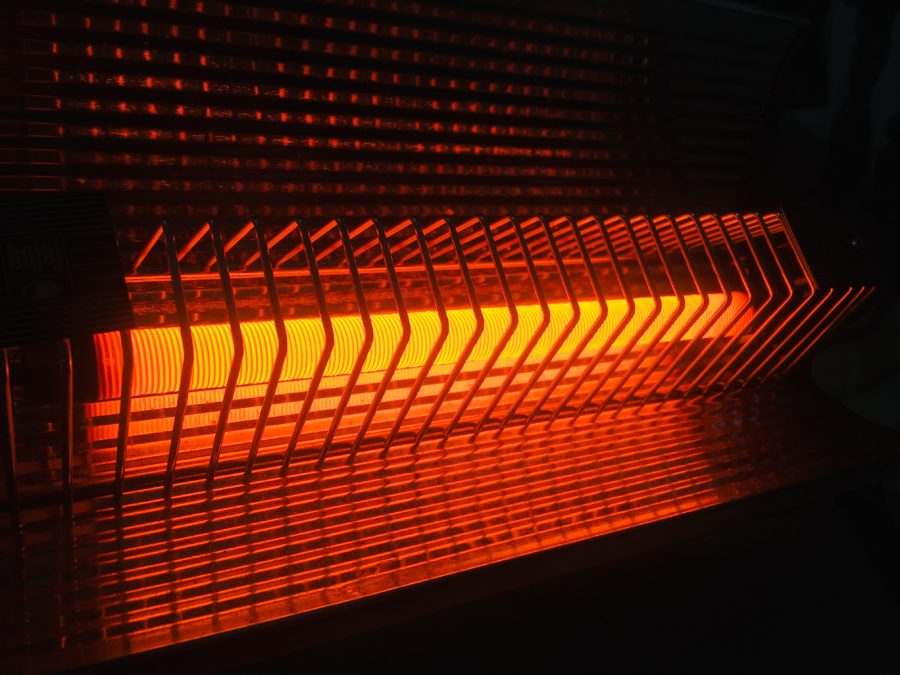
Lowering Energy Bills With Bitcoin Heaters
One of the best ways to gain a competitive advantage in business is to turn a waste product into a valuable byproduct. In cost accounting, raw materials and labor produce finished products, byproducts, and waste. So if you want to reduce manufacturing costs, you have a few ways to do it. You can spend less on raw materials and labor, but that will reduce the quality of your finished products.
But you can also lower manufacturing costs by reducing waste or producing additional byproducts. Waste earns you nothing and often costs you money to throw out. Garbage trucks don’t pick up trash for free and landfills charge disposal costs as well. And dumping trash in the landfill is also bad for the environment. So if you turn waste into a byproduct you’ll have lower trash disposal costs and earn money from the byproduct.
One example of this process is the grocery store Kroger generating energy from food waste. Kroger has set up an anaerobic digester that converts leftover food into biogas. Then it uses the gas to generate power for its Food 4 Less grocery distribution center and fuel the forklifts at the center. Instead of buying fuel for the distribution center and paying to bury the food waste in a landfill, the grocery store converts the food waste into fuel.
Mining Bitcoins With a Heater
Bitcoin mining uses electricity to perform calculations that earn the miner bitcoins. This process generates waste heat. So the basic equation is that electricity is converted into bitcoins and waste heat. Electricity is the variable cost so Bitcoin miners closely monitor their electricity bills and search for inexpensive sources of electricity. Now Heatbit has introduced another way to reduce Bitcoin mining costs.
It’s now October and it’s getting colder outside, and I live in a coastal city with a Mediterranean climate. It’s a lot colder elsewhere. Residents of northern climates often pay hundreds of dollars per month for heating bills. For many people, spending money on electricity to power heaters is not optional. Without heaters, they would freeze. So there will always be demand for heaters.
Heatbit has developed customized heaters that use the waste heat from bitcoin mining to heat a house. These devices have been designed for both bitcoin mining and home heating purposes. They come in several different color schemes so they’ll match your house décor. And they have thermostats and other control features that you can adjust with the Heatbit app.
The Heatbit mining heaters cost $949 each and are available for pre-order right now. The company expects to begin selling them in December 2021. They’re much more expensive than normal electric heaters, which are available for $20 at Wal-Mart, but these heaters earn you money. And that efficiency provides another benefit you might not expect.
Lowering the Breakeven Point
The breakeven point for bitcoin mining occurs when the cost of electricity is equal to the value of the mined bitcoins. Above this point, it’s not worth it to mine bitcoins. Below this point, it’s worthwhile to mine as many bitcoins as you can.
But bitcoin heaters change this equation. In the new equation, electricity produces bitcoins and heat. And you can calculate the value of the heat by subtracting the cost of the electricity you’d use to run a normal heater. So a device like this would reduce the breakeven cost for bitcoin mining as long as it replaces the cost of running other heating equipment.
This calculation applies regardless of scale so there’s no reason to limit this type of technology to consumers. For example, a grocery store like Kroger could use large-scale bitcoin heaters to generate heat for its stores.
But you can also think of mining heaters in another way. If you’re primarily worried about the costs of running an electric heater in the winter rather than making money from mining, you can think of a bitcoin heater as a way to reduce your energy bills. If you sell the bitcoins, that will partially subsidize your energy costs. If the market price of bitcoins rises high enough, you might even get free heating in the winter.
Other Bitcoin Heaters Are Available
I looked around to see if Heatbit had competitors, and there’s another company called Ming Energy that also sells bitcoin heaters. Ming Energy sells a 1500 watt heater for $3499.
The Ukrainian company Hotmine sells a bitcoin heater for $1000.
Another bitcoin heater is available from the French design firm Qarnot for $3600. The Qarnot heater can also mine Ether, Monero, and Zcash and it automatically selects the most profitable coin to mine.
Product Reviews Would Be Useful at This Point
Several startups have discovered that the waste heat from bitcoin mining can be used to heat a house in the winter, and this concept makes sense. A bitcoin heater would generate income that would lower your energy bills. It’s no longer unique, though, and there are several brands of bitcoin heaters available in 2021.
It appears that bitcoin heaters are only available directly from manufacturers. I haven’t seen them at big-box stores yet, but it would make sense to sell them there. A bitcoin heater would be a big-ticket appliance purchase, like buying an oven or a refrigerator, and it would be useful to compare heaters on the shelves at a store like Target or Costco.
For ultimate consumer adoption, it would also be helpful if the retail employees explained how these products compared with one another. At this point it would be worthwhile to write product reviews and comparison articles for bitcoin heaters.
Power consumption and hash rate aren’t the only factors to consider for a mining heater. These are expensive appliances so it’s worth considering factors such as product quality, repair costs, and the manufacturer’s reputation as well. There isn’t much information available about some of these heaters and that makes it difficult to figure out which heater is the best one to buy.